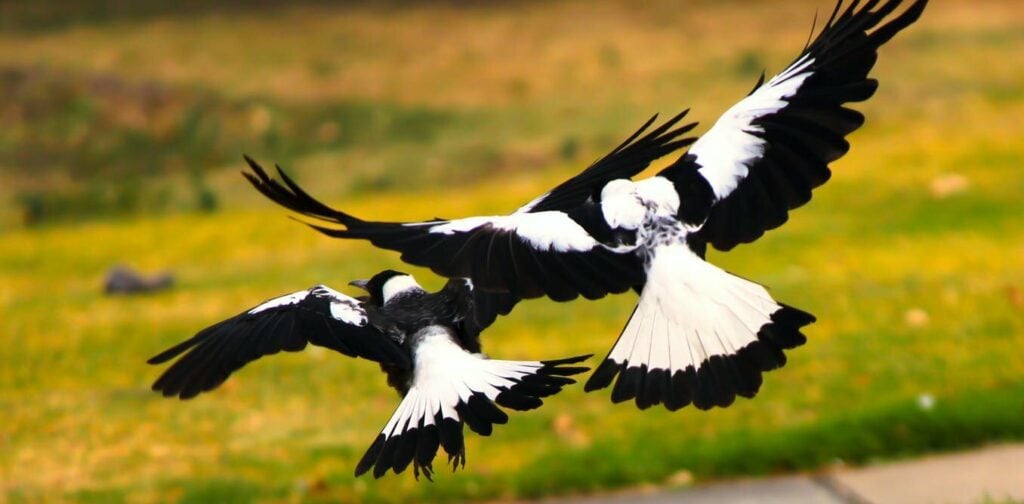Magpies belong to the Corvidae family of birds. Like other family members, they are often regarded as clever creatures. The Eurasian magpie, for example, is considered one of the most intelligent creatures on the planet. It is one of the few non-mammal species capable of recognizing itself in a mirror test. But how did a group of Magpies outsmart researchers?
Scientists studying birds in Australia strapped them with tracking harnesses, and the birds assisted each other in removing the straps.
The Magnet Harness
The harness also featured a unique characteristic. It had a one-millimeter-long fastening that opened automatically when the bird came near a magnet, causing the harness to come off. The researchers intended to install magnets at feeding stations so that the magnet would release the harness when a bird landed on the station. After the bird flew away, the researchers could retrieve the tracking device and examine the recorded data.
They chose the Australian magpie for their first trial. Magpies are roughly 36 to 44 cm long and weigh about 300 grams, making them about the same size as pigeons.
The researchers set up feeding stations in an area where a group of magpies lived. After six weeks, they put soft net traps on the feeding stations and caught five magpies for their trial.
The birds were fitted with GPS harnesses and had identification bands attached to their legs. They were then released.
The researchers noticed one of the birds pecking at its leash almost immediately. Two untrapped birds approached the first bird and pecked at the harness. Within a half-hour, one of the “assistant” birds discovered the magnetic clasp and snipped it with its beak. The harness had come undone. (Source: Teaching Kids News)
Assisting One Another
According to the researchers, a different magpie assisted in the removal of another magpie’s harness. They saw four birds being helped out of their harnesses in all. By the fourth day, all of the harnesses had been removed.
The failure of their harnesses disappointed the researchers. But they recognized they had discovered two significant facts about magpies.
One is that the magpies can tackle challenging tasks, such as determining how to remove the harnesses. The second lesson was that numerous other birds assisted a bird they felt was in distress.
Many birds that live in groups cooperate on duties such as hunting or rearing their young for the benefit of the entire group. However, these birds were doing it selflessly. Even though it received no personal advantage from the noble gesture, one bird assisted another.
According to the experts, people developing new monitoring systems for birds should remember that some birds collaborate to solve difficulties. (Source: Teaching Kids News)
Rescuing the Magpies
So far, most tracked bird species, such as waterfowl and raptors, have not been very friendly or thought to be cognitive problem solvers. We never considered that the magpies would see the tracker as a parasite that must be removed.
Tracking magpies is critical for conservation efforts since these birds are sensitive to climate change’s rising frequency and intensity of heat waves.
According to one study, the survival rate of magpie chicks in heat waves can be as low as 10%.
They also discovered that greater temperatures decreased cognitive ability for tasks like foraging. In a constantly warming climate, cooperative behaviors may become even more crucial. (Source: ABC News)
Image from Phys.Org
